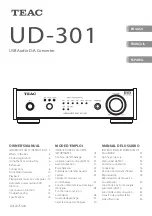
164
miroVIDEO DC30 Series User´s Guide
Compression method which creates compressed digital video sequences. These
video sequences need special additional hardware to be recorded/played back
and offer a better image quality than data compressed with software CODECs.
For images, this normally means a 16-bit (5-6-5) data type that can contain up
to 65,536 colors. TGA file formats support images of this type. Other file
formats require prior conversion of a HiColor image into True Color. For
displays, HiColor normally refers to 15-bit (5-5-5) display adapters that can
display up to 32,768 colors.
Part of the
JPEG image data compression. Values occurring seldom receive
a long code, values occurring often receive a short code.
Also AT bus, common hard disk interface for PCs.
An image is a reproduction, or picture of something. In this case, the term is
used to describe digitized pictures, consisting of pixels, which can be shown on
a computer display and manipulated by image enhancement software.
Method to reduce the amount of data of digital image and video files.
Interlaced describes the refresh method which the PAL and other TV systems
use: The TV image consists of two image halves of 312 ½ lines each.
An arrangement of audio and video to promote smoother playback and
synchronization or compression. The standard AVI format equally spaces audio
and video.
Irrelevant (unimportant) information can be eliminated during the image data
compression, since the human eye does not realize that this information is
missing.
Abbreviation for Joint Photographic Experts Group. Standard for the image
compression.
A color made transparent so that a background image can show through. Most
commonly used when overlaying one video sequence on top of another,
allowing the underlying video to display wherever the key color appears.
A method to help in the compression of video files, which works by assigning
certain frames as key frames whose video data is completely saved at the time
of compression. The video data of any intervening frames between two key
frames is then only partially saved. On decompression these partial frames
reconstruct their data from the key frames.
Medium which stores analog video. Information on laserdisks can only be read,
but not changed.
In video editing, the mark in and mark out times refer to the starting and ending
time codes that identify the portions of clips to be included in the project.
Hardware
CODEC
HiColor
Huffman-
Coding
IDE
Image
Image
compression
Interlaced
Interleave
Irrelevance
JPEG
Key color
Key frame rate
Laserdisk
Mark In / Mark
Out















































